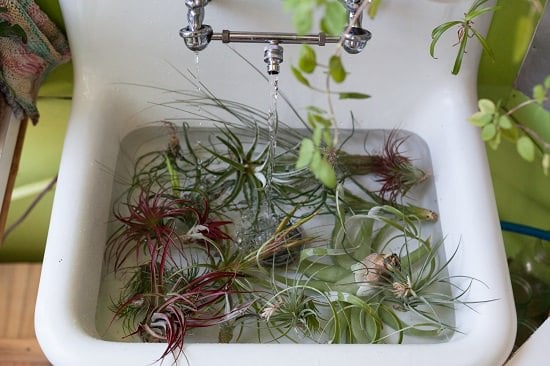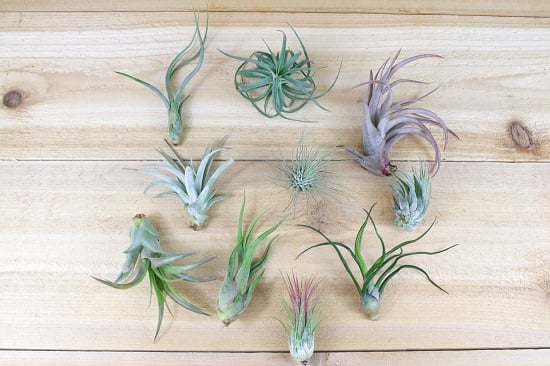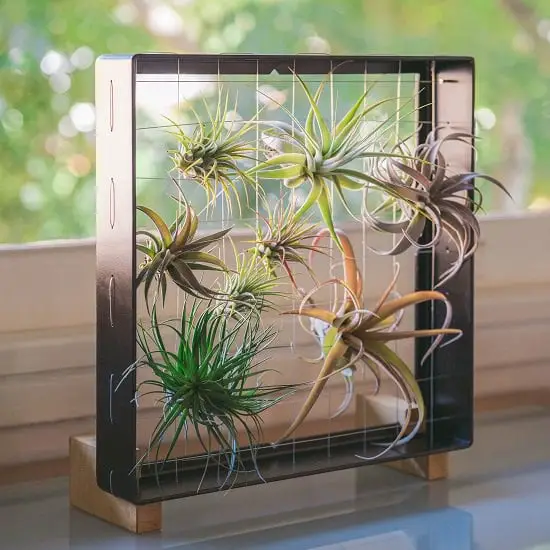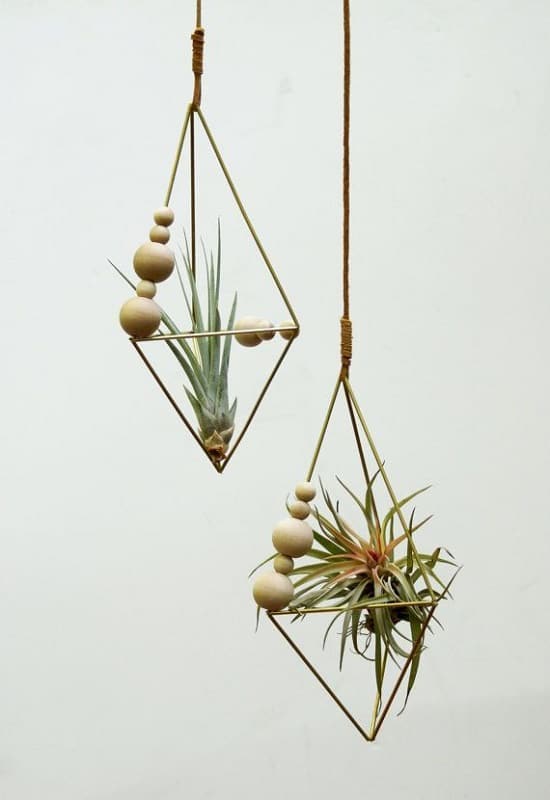Your favorite air plant dying? It’s sick, and you want to save it? Learn How to Revive an Air Plant in this article!
Air plants are fascinating. Identified by their spike-like, gray or green, scaly foliage. They are epiphytic plants, and this means that unlike most plants, their survival is not embedded in the soil. They draw moisture and nutrients through scales on their leaves. This makes their care minimal, but that doesn’t mean they don’t get sickly, shriveled, limp, brown, or droopy. They do!
Air Plant Dying, How to Save it?
The question that most people ask when their air plant is dying, can you save an air plant? The answer is yes! There are a few reasons why an air plant can become sickly. It could be because of neglect, shipped from far away or it is just the weather. In this article, you will learn how to revive an air plant.
How to Revive an Air Plant?
1. Soaking is Best
The very first and fundamental way to revive an air plant is soaking it in water. Soak the air plant for about 6-8 hours. During the day or overnight. Shake off any extra water after the dunk and let the plant dry for about 4 hours in a bright spot, this is of the essence because dampness is the main enemy of any air plant. Drying can be done by placing the plant in a colander or on a layer of paper towels. Repeat the soaking every 2-3 days but for less time until the plant doesn’t look dry anymore.
Later, you can adopt for once a week soaking. Do this for 20-30 minutes. Do this less frequently in winters or when the weather is humid. If you live in a hot climate, soak the air plant in water for more time, a couple of hours every week is enough.
2. Kill the Hunger
Plants get hungry. The most prevalent misconception about air plants is that they absorb whatever they need from the air. Feed your air plants once a month by adding air plant fertilizer to the water mix. Use air plant or bromeliad mix following the recommended dose on the packet. If you can’t find the air plant fertilizer, use any liquid houseplant fertilizer with 1/4 strength.
Also Read: Air Plant Display Ideas
3. Ray of Sunshine
The three primary requirements of air plants are air, water, and light. Your air plants may be dying because of lack of sunshine. Bright filtered and indirect light, about 3-5 feet from the window, is perfect for indoor air plants. The little direct sun will also work amazingly, preferably the morning sun. Don’t and please don’t let these plants enjoy the sun all day, your plants will definitely get sunburns and suffer from dryness. Artificial lighting is also a great idea, but let the plants be near the light source and switch off the lights at night. This will help the plants retain enough moisture. Also, it’s important to note that air plant will not survive in low or freezing temperatures. Keep the temperatures at least above 40 F (5 C).
4. Air Circulation is Important
If sometimes you need to step outside, get some fresh air and remind yourself who you are and who you want to be, so does your air plants. Poor air circulation is another main reason that can lead to your plants dying. If you want your air plants to survive and thrive an open-air display is a brilliant idea. Air plants that are kept under glass in terrariums or enclosed areas don’t survive. Good air circulation will help in moderating air temperature and prevents water from accumulating on leaves. Don’t place your air plants near heating or cooling vents.
5. Do Away with Pests
A rare and regularly ignored reason, why your air plants dying, is the presence of pest. When watering, this is the ideal time to check for the pest. If you see a cottony, web-like substance, you’re meeting a mealybug. These pests cover themselves in a waxy substance to protect themselves and then feast on the plant’s sap. The treatment of this pest is simple. First, quarantine the plants from the others. Then wash the plants with a diluted mixture of mild liquid dish soap and water. Wipe every little crevice with a cotton swab soaked in rubbing alcohol. After observing it for some time and all the pests are gone, return the plant to others.








Very informative and simple palatable way a big thank you
Some of my air plants have turned brown at the base of the plant. Am I overwatering or under watering?